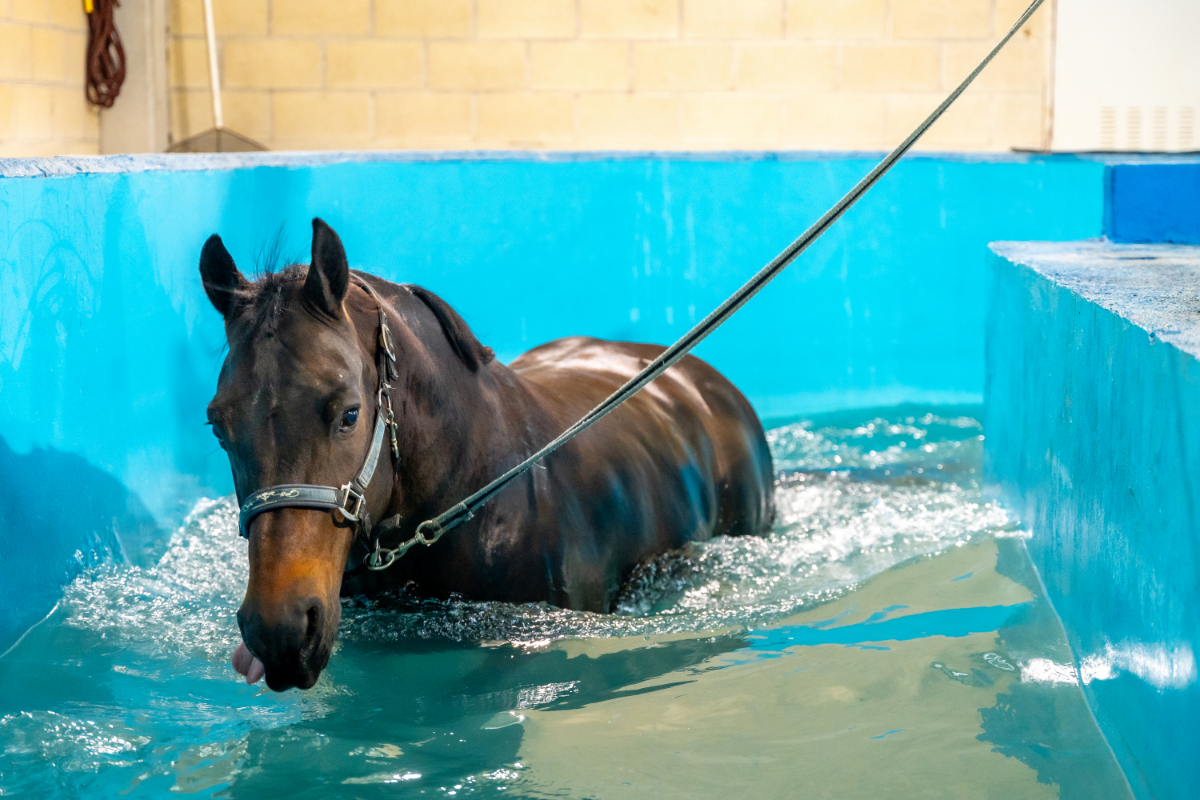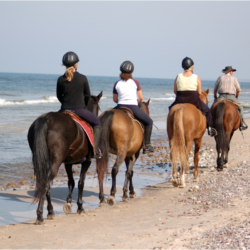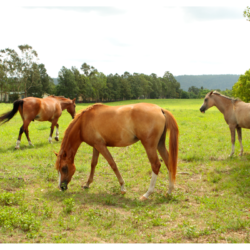Australian harper, also known as stringhalt, is a neurological condition affecting horses, characterised by involuntary and abnormally exaggerated contractions of the extensor muscles of the hind limbs. Although rare, this condition has a significant impact on the locomotion and general well-being of the horses affected. The aetiology of Australian Harper remains uncertain, but experts suspect environmental, toxic and nutritional factors. Accurate diagnosis is crucial to the proper management and treatment of this disease.
What does Australian Harper look like?
A disorder of the horse’s musculoskeletal system, harper is an atypical movement of the hind limbs rather than an actual lameness. It occurs in two forms: the classic form, often linked to trauma to the cannon, and Australian harper, the causes of which are not well known.
Harpers are characterised by involuntary hyperflexion of the hind limbs. The classic form, generally unilateral, appears after an impact to the dorsal surface of the cannon. The Australian form, which is bilateral, is due to a distal axonopathy affecting the fibular nerves, inhibiting the myotatic reflex arc. The limbs may be affected differently. These forms are distinguished by epidemiological study.
The epidemiology of the classical form involves isolated cases, whereas the Australian form is epizootic. Although known in Australia for over a century, it is still poorly understood. In France, an upsurge in cases occurred after the 2003 heatwave.
Australian harper is manifested by hyperflexion, often sudden and bilateral when travelling, with varying degrees of severity:
- I: Hyperflexion during backward movements, turns or stress.
- II: Appears at the walk or trot, accentuated when moving backwards or turning sharply.
- III: Visible at walk and trot, difficulty backing up or turning.
- IV: Exaggerated hyperflexion, the hindlegs touch the abdomen.
- V: Hopping movement, hyperflexion maintained for several seconds.
Severe cases can lead to amyotrophy of the hindquarters. The Australian harper can also cause laryngeal hemiplegia, leading to dewclawing. Diagnosis is based on epidemiological and clinical criteria, confirmed by electromyography of the lateral extensor muscle of the finger.
What causes this ataxia?
Following the heatwave of 2003, France saw an upsurge in cases of harper’s ataxia, which had previously been sporadic. The only common factor in the reported cases was the presence of rooted pigweed (Hypochaeris radicata) in the meadows grazed by the affected horses.
This weed, which thrives on dry land, proliferated in the south of France following the drought of 2003. This suggests a toxic aetiology linked to the ingestion of rooted pigweed, the toxicity of which varies according to certain factors, such as the synthesis of toxic secondary metabolites.
However, epizootics of harper have occurred in meadows without the presence of rooted porcupine . This indicates that the ingestion of this plant promotes the disease without being the sole cause. Researchers are also considering other factors, such as mycotoxins or dietary deficiencies.
The most likely cause remains intoxication with rooted pigweed, causing distal axonopathy. Experts have noted the presence of this plant in the grazing areas of affected horses. However, other unidentified causal factors could also contribute. Researchers suggest the involvement of mycotoxins, potentially present in endophytic fungi of porcini or other plants. In Australia, the harper season coincides with a peak in the incidence of diseases associated with mycotoxins.
Focus on rooted porcini
Hypochaeris radicata, or Rooted Porcella, is a perennial herbaceous plant in the Asteraceae family. It grows to between 30 and 70 cm tall. Native to Europe, the Maghreb and the Near East, it is distinguished by its rough rosette-shaped leaves and dandelion-like yellow flower heads. This plant grows in fields, pastures and sometimes in urban areas.
Common in lawns, grazed meadows and moors, it is resistant to mowers and trampling. Edible, Rooted Porcella is used in salads or cooked. Roasted roots can be used as a coffee substitute.
However, it is toxic to horses, causing spasms and severe hyperflexion of the hind legs, known as Australian harper. The toxicity of this plant is attributed to environmental factors, reinforced by the presence of mycotoxins and dietary deficiencies.
Recent studies indicate that rooted pigweed is a favourable, but not sufficient, factor in the development of Australian harper syndrome. Researchers suspect an oxidative attack affecting the central nervous system, leading to degenerative lesions in the nerves controlling the muscles of the hind limbs.
How can this condition be treated?
As the exact causes of harper are still uncertain, treatment is mainly symptomatic. Management of clinical signs includes the administration of muscle relaxants and tranquillisers such as acepromazine to reduce stress and agitation. Phenytoin, an anti-epileptic, can reduce Harper’s symptoms. However, its long-term use is limited by the lack of a specialised equine pharmaceutical.
Surgical treatment, in particular tenectomy of the lateral extensor muscle of the finger, is sometimes used, especially for the classic form. Although controversial, some studies have shown positive results. However, spontaneous remission, which is often long but frequent, remains the most effective solution. Affected horses should be removed from pastures containing rooted swine. They should be placed in better-kept environments.
In the case of persistent laryngeal dysfunction, recovery may be prolonged. Phenytoin may offer rapid improvement, but clinical signs may reappear after treatment is stopped. Infusions are not effective for this chronic intoxication. Draining cures and anti-oxidants can also improve the horse’s condition. Calm is crucial to prevent symptoms worsening.
Studies show that myotenectomy can significantly reduce hyperflexion in the majority of horses treated, with no relapse observed after the operation.
What are the means of prevention?
Prevention rather than cure is essential. The most effective way of limiting the risk of intoxication is to identify and destroy rooted swine in the meadows where the horses graze.
As the plant has a highly-developed root system, it is difficult to destroy by hand, even in lightly colonised meadows. The most effective method is to treat the meadows with a herbicide or to turn them over and resow them if they are too poor.
If swine fever has taken root in your meadows, it is vital to keep all horses, whether infected or not,away from contaminated plots. Avoid grazing horses on poor meadows, especially during dry spells. As a precaution, keep horses away from areas where rooted swine fever is present. Avoid grazing on impoverished land to prevent animals from ingesting plants that they would not normally eat.





